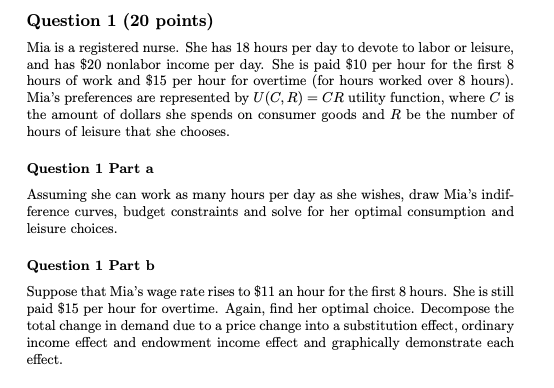(Solved): Question 1 (20 points) Mia is a registered nurse. She has 18 hours per day to devote to labor or ...
Question 1 (20 points)
Mia is a registered nurse. She has 18 hours per day to devote to labor or leisure, and has $20 nonlabor income per day. She is paid $10 per hour for the first 8 hours of work and $15 per hour for overtime (for hours worked over 8 hours). Mia’s preferences are represented by U(C,R) = CR utility function, where C is the amount of dollars she spends on consumer goods and R be the number of hours of leisure that she chooses.
Question 1 Part a
Assuming she can work as many hours per day as she wishes, draw Mia’s indif- ference curves, budget constraints and solve for her optimal consumption and leisure choices.
Question 1 Part b
Suppose that Mia’s wage rate rises to $11 an hour for the first 8 hours. She is still paid $15 per hour for overtime. Again, find her optimal choice. Decompose the total change in demand due to a price change into a substitution effect, ordinary income effect and endowment income effect and graphically demonstrate each effect.
help please!
Expert Answer
Given, - Mis. Mia has 18 hours per day to devote to labor or leisure - His utility function is U(C,R) = CR C = $ per year
